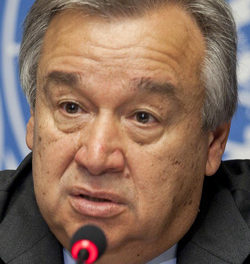
SADC regional integration delayed
Regional integration is a broader concept which may sometimes fails to comprehend. A region can choose to pursue deep or shallow integration. Thus, RI should not only be viewed from a narrow angle. In the Southern African Development Community (SADC), regional integration is predominantly political in nature. However, the broader perspective encompasses economic, political and financial integration. At the back of these three categories lies institutional integration. The roadmap for the SADC on its regional integration course has been to realise a customs union in 2010, common market in 2015, monetary union in 2016, and an economic union in 2018. To date, with an exception of a free trade area, other high stages remain a dream away. This pessimism is based on historical postponements and an indefinite timeframe for a customs union. What are the obstacles to the process of integration?
Before the 2009 global financial and economic crisis (GFEC), SADC member states were narrowing down on their macroeconomic convergence targets. This is revealed in studies that were conducted in the SADC region under the Formative Process Research on Regional Integration in Southern Africa. Literature material under FOPRISA also offers a glimpse on the situation after the GFEC. While a lot has been achieved on sectoral and collaborative programmes, it is also worthy to mention that the agenda for SADC is trailing behind the expectation. While the GFEC events undermined the gains on macroeconomic fundamentals, ex post events are most exclusive on economic and financial integration but their constraints arises from other factors that will be elaborated on.
Since decisions that the SADC Secretariat implements can only be enforced when there is a joint buy-in from all member states, this process has led to many delays in implementing protocols. For example, when a member state disapproves a position, such can be delayed until there is full conviction that it is of benefit to the hesitant member state. Is this approach still the best for spearheading regional integration considering regional diversity stemming from development, political, economic, strategic and geographical differentials? This question offers scope for an explanation on the governance system that drives the SADC integration agenda. Since SADC is inherently a politically driven constellation, the regional integration agenda has become part and parcel of the drives of neo-governmentalism. It is safe to say that political institutions in member states have a major influence on progress of this agenda.
While the primary purpose for member states to engage in regional integration is for the betterment of their citizens, the common delays puts strain on the lives of the same nationals of the region. There is very little drive from the perspective of neo-functionalism. Although the two drivers should work interchangeably depending on the stages of integration, for now neo-governmentalism is the predominant one. It is erroneous to have to expect neo-governmentalism to advance economic expectation of the region. Neo-governmentalism is only necessary in achieving political and institutional integration but not economic and financial ideals. For these, neo-functionalism is the appropriate instrument that can do the driving properly.
The neo-governmentalism pressure has overlapped and is the culprit for delayed stages of integration in SADC. Lately, real negotiations on Economic Partnership Agreements have started to creep. Such comes at a time when the region has just recovered from the GEFC. The timing for EPA negotiations is difficult for political decision makers in the region and is compounded by uncertainty in European markets due to persistent economic crisis in that part of the world. SADC’s imports of capital goods are mainly sourced from European markets and therefore, market turbulence in the European markets will not help the region. As it stands, negotiations for the Economic Partnership Agreements (EPA) have also brought some fever. The EPA negotiations have not only challenged the regions to capacity to act as a collective but have also exposed fragility of the SADC configuration. While the EPA negotiations are ongoing, activities on the long-touted continental integration are also beginning to suffer. The casualties are beginning to appear as pressure to sign the EPA continues to mount.
In order for the SADC agenda to move forward, SADC member states should guard their envisaged integration agenda jealously. The neo-governmentalism approach should act subserviently to the neo-functionalism on economic and financial stages of integration. Since more resources and focus now goes towards EPA negotiations, there is need for renewed effort on how to add impetus to the long-awaited SADC agenda of regional integration. The lesson is that an external EPA agenda should not be placed to supersede the region’s interest. If SADC as a collective had a trade policy, this element should have been made one of its key strength. Needless, a trade policy is too early for a region that has not yet become a common market. An advanced level of integration would have prevented fragmentation of the SADC during EPA negotiations. In order to move forward, a customs union in SADC should be made practical and the financial systems need also to be put in motion. Other existing frameworks such as the Common Monetary Area between Lesotho, Namibia, South Africa and Swaziland and the Southern African Customs Union model needs to be replicated within SADC for economic and financial integration to finally see the light.













































